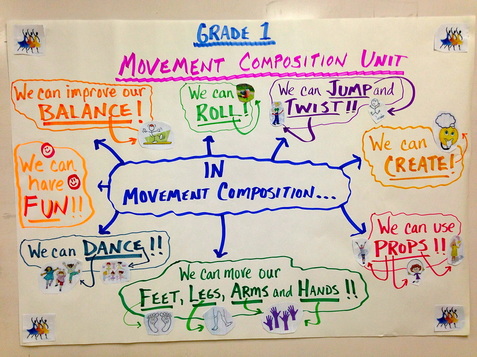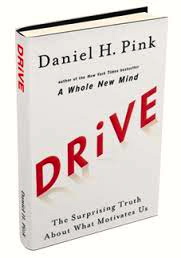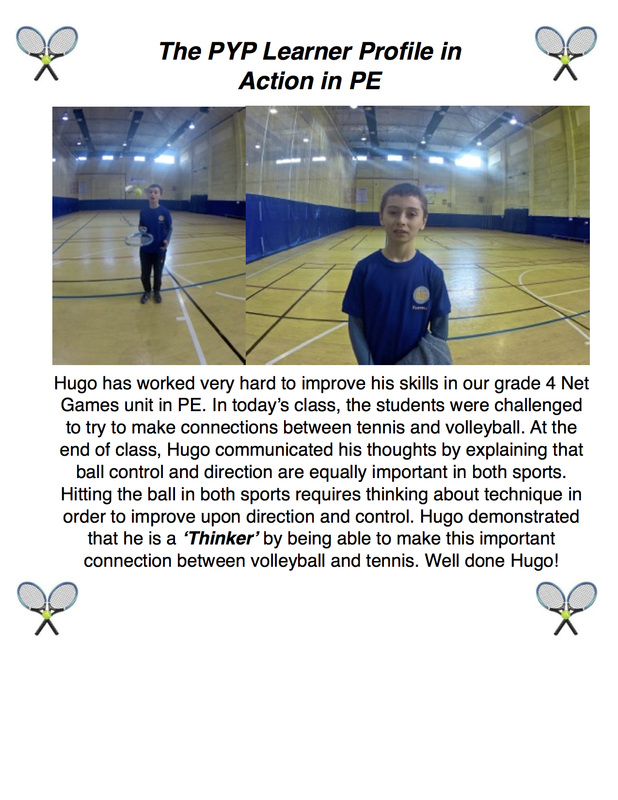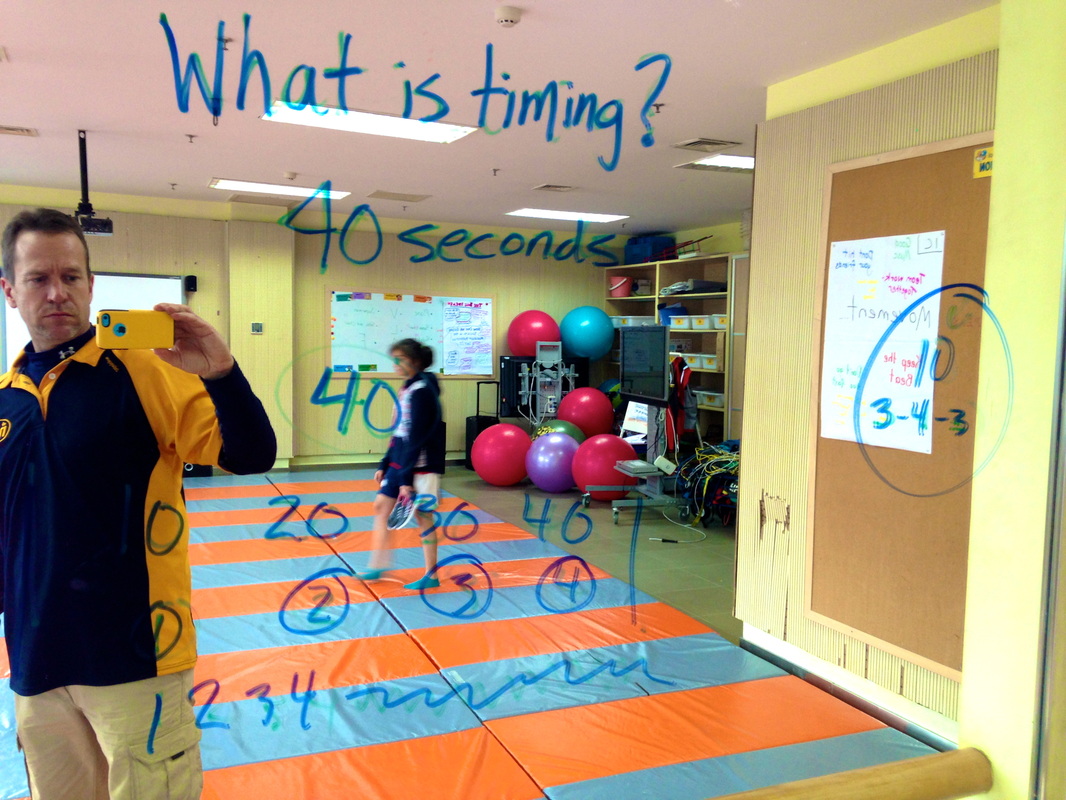Making important connections between net games I had one of those great teaching moments this week when a student of mine, an English as a Second Language learner, came up to me at the end of class to say he realized a connection between volleyball and tennis in regards to the need for ball control. I had designed an activity for the students to work on touch in both volleyball (using a beach ball) and tennis. It was a simple activity that required students to work in groups with the main aim being to see how many times in a row they could keep control of the ball.
At first most students were using way too much force, but through discussion and practice we worked to refine how much force we used. We started with tennis and then moved to volleyball before returning to tennis once again at the end of the class. The student in the picture below had an AHA moment when he suddenly had total control of the ball in tennis. This is when he came over to me to explain what he had learned. I immediately took a picture of him and explained to him that I was going to give him a recognition award for being a 'Thinker'. I created a recognition poster for him and shared it with his ESL teacher, so she could present it to him back in his homeroom class. I also emailed the poster to his parents to let them know what a great job he had done. It was rewarding to see how proud of himself he was. So important to recognize these special moments in PE as they definitely serve to motivate students to stay engaged in the activities that we do in class. Thanks for reading.
0 Comments
Using student generated ideas as assessment for learning Call me old school Andy, but to me, there is so much pedagogical value in creating visuals of our students' learning journeys regardless of the units being taught in PE. Despite the technological advancements in education, I believe that pencil and paper (actually marker in this case) still plays a highly important role in bringing students' conceptual understanding alive. I am currently teaching a grade 1 movement composition unit at Nanjing International School in China. In the introductory phase of this unit, the students explored a number of different styles of movement to music with and without props. This exploratory phase allowed the students to see and realize that movement composition is not only about dance, but can include many other elements. Through this initial part of the unit, I asked a number of questions to the students regarding what movement composition is and what is important to know in the unit. I recorded their ideas in my journal then used the ideas to create the visual that you see in the photo above. Please see video below of a whole group discussion we had directed at the ideas presented in the poster. This discussion took just over 3 minutes and was critically important to have at this point in our movement composition unit. I have always argued that their is sound pedagogical justification for slowing the class down to have these important discussions. Some of the ideas in the visual connect directly with key student learning outcomes in our scope and sequence that I must cover in the movement composition unit. I discussed with students that many of the ideas presented in the visual are things that they must be able to know and do in our unit. However, it was evident that my students did not yet grasp the understanding of timing in movement composition. Despite talking about the importance of it and describing what the concept of timing meant, they hadn't mentioned it in any of our discussions. It also made me question how well I had taught this concept. This allowed me to create an activity that could focus and work on the concept of timing. My teaching colleague, Jo Disher, had shared with me a great You Tube video of 2 young kids doing an amazing partner balance routine. We decided that it would be a great teaching tool to stress the importance of body control, strength and balance in movement composition. Here is the video below. The students were truly amazed while watching the video and having the discussion about the importance of balance, strength, and body control seemed so natural at this point. Once we finished off the discussion, the students were challenged to create a partner balance routine. They had to sequence 4 partner balances together and work on the important elements of balance and body control. They had a lot of fun doing this, but at this point I had purposely steered away from mentioning timing. As they had yet to grasp this concept, it was a perfect teachable moment to introduce a challenge to them. Using a 40-second piece of music from the You Tube video above, I told the students that they had to complete the 4 partner balances in the time that the music was playing. At first they could not of course. But as we looked at the length of time and broke it down, the students began to see that they had to put thinking skills into action based on the time limit placed on their routines. Some students were finishing their 4 partner balances much too soon while others we not even close to completing their 4. Check out the video below. It shows an important discussion I had with them about breaking down the time limit placed on their routines. A Bit of Math Thinking Written down on the mirror are some of the numbers I was playing around with and discussing to help get the students thinking more about how they were going to fit in the start of the routine, the 4 partner balances, and the finish of their routine within the 40 seconds. You can see on the right side of the picture that our discussion led to giving 3 seconds for building the partner balance, 4 seconds for holding the balance, and 3 seconds for unbuilding the balance (10 seconds total for one partner balance). I must say that the grade 1 students did quite well at trying to focus on timing and making their 4 partner balances fit into the 40 seconds. Not all groups were able to pull it off, but at least I had them now thinking about the concept of timing and working it into their routines. Check out the result below. Everything you have read about today took part in a 35-minute class. Lots accomplished in this time and some great stuff to build upon over the next couple of classes. Check out the video below of how it all went. Not perfect by any means but looks like the ship is headed in the right direction! In Summary
By using student generated ideas in movement composition I was able to create a visual that was used to help stimulate important discussion about the big concepts in this unit. Referring to my journal notes it was evident that I did not do a good job at covering the concept of timing (which is a key learning outcome). Using the students' ideas to create a visual allowed me to design a learning engagement that could focus on the concept of timing in today's lesson. I can say with full certainty that the majority of students now understand the importance of timing in a routine. To consolidate this understanding further, we will continue to work on timing over the next couple of classes. I know this was one of my longer blog posts, but I hope you got something from it. As always, thanks for reading! Mastery and flow within our teaching practice Although I read Daniel Pink's book Drive last year, I keep it close and refer back to it from time to time. I actually have both the book itself and the audiobook. Drive is really a must read book as there are a number of ideas and concepts that are immediately applicable in education and in our own teaching practice. As I was once again listening to the audiobook (these past few days on walks home from school), I was reminded about the concepts of mastery and flow. Mastery is ever elusive in our profession, however there are times that it seems like we are close only to have it slip from our hands. This is how it should be as it forces us to constantly strive for excellence in our daily practice. What I am more interested in is the concept of flow. When I think of my very best lessons and most rewarding teaching moments, what was it that made these times so special? As Daniel Pink says, when we lose all sense of time in what we are doing, chances are we are in flow. According to the book Drive, repeating and increasing moments of flow over time leads us on a quicker path to mastery. Sometimes I feel as though I am in flow when I take notes in my journal and plan the lessons I will have my students engage in. Other times I feel in flow when I am blogging about something I am passionate about. Regardless of whether flow happens when I am teaching, planning, or blogging, it is important for me to get down to the nitty gritty in terms of why it happens when it does. Knowing what exactly was happening when we were in moments of flow helps in making flow repeatable to us. Excellent advice from Pink that I wanted to share in this blog post. So, as I reflect more on flow within my own instructional practice and life, I am excited to look for patterns and to try to consciously create an environment that will help me find flow more often, especially when I am with my students. Thanks for reading. |
AuthorKAUST Faculty, Pedagogical Coach. Presenter & Workshop Leader.IB Educator. #RunYourLife podcast host. Archives
September 2022
|
- Welcome
- All Things Teaching and Learning
- The Aligned Leader Blog
- Consulting and Coaching Opportunities
- My TED X Talk
- My Leadership Blog
- Run Your Life Podcast Series
- How PYP PE with Andy Has Helped Others
- Good Teaching is L.I.F.E
- The Sportfolio
- Example Assessment Tasks
- PYP Attitude Posters (printable)
- Publications


 RSS Feed
RSS Feed
